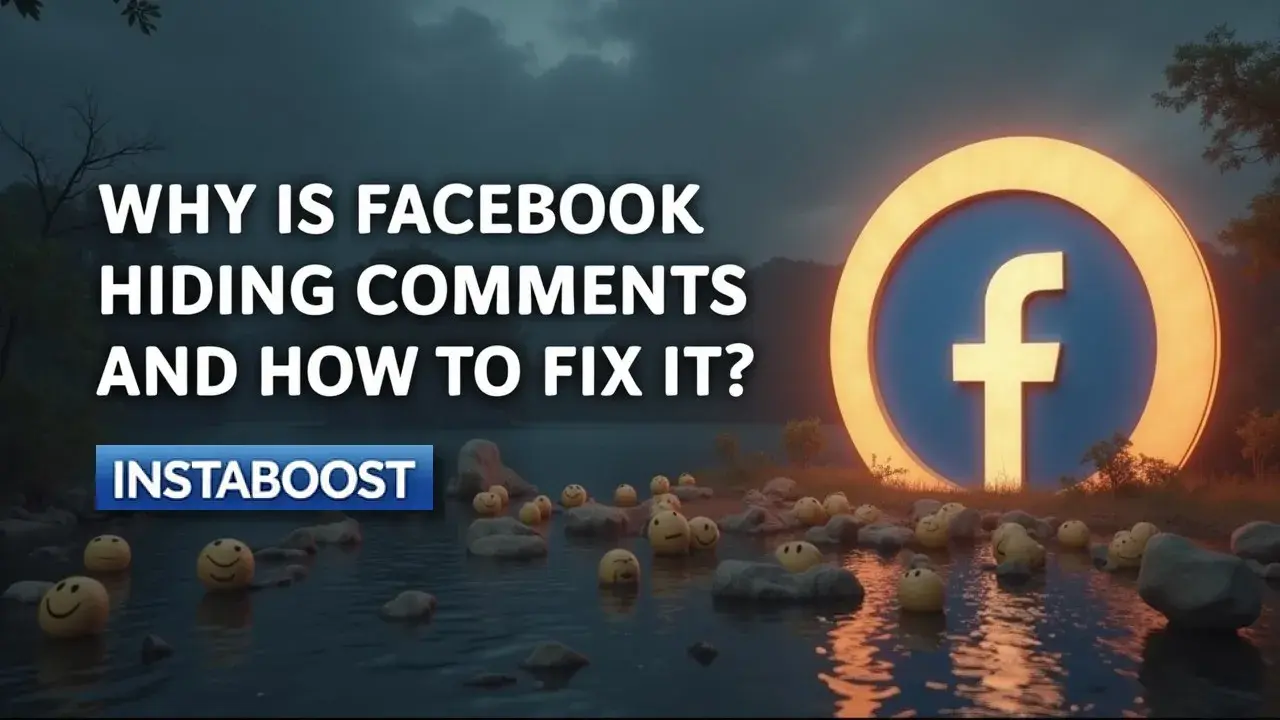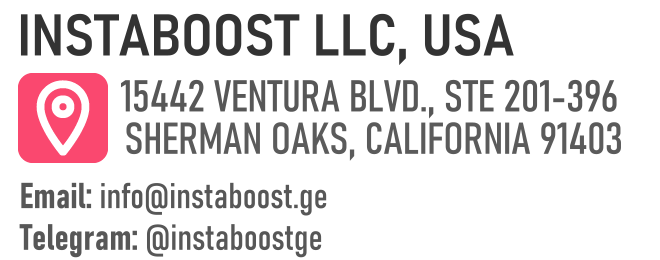Why Is Facebook Hiding Comments and How Can You Fix It?
Comment visibility issues typically stem from settings rather than glitches. Check post visibility, keyword filters, and any blocked terms, then monitor the first hour after posting when moderation rules and early engagement can shape what appears. Aligning these controls usually restores normal conversation flow and can lead to a small uptick in responses. Matching post timing to audience habits and tracking first-hour engagement helps create steady, repeatable growth.
When Comments Disappear, It’s Usually a Setting – Not a Shadowban
If you’re seeing fewer replies or “hidden” threads on Facebook, it’s often quiet, fixable controls doing what they’re designed to do: protect quality, reduce spam, and prioritize relevance. Facebook blends moderation signals – keyword filters, profanity and spam checks, Page moderation lists, comment ranking, and user-level privacy choices – into a system that can down-rank or hide messages without fanfare. That can feel like throttling, but it’s usually a mismatch between your settings, your audience’s behavior, and the early momentum your post earns.
Treat visibility as a controllable input. Confirm who can comment and whether Restricted or Followers-only toggles are trimming your reach, then align keyword and link filters with the language your real commenters use so you’re not suppressing genuine conversation. If you run ads or boosted posts, match placement and audience intent – qualified targeting paired with clean analytics keeps safe comments from tripping automated filters at scale. Watch the first hour. Early, authentic replies from creators, collaborators, and customers generate retention signals that keep comments surfaced rather than collapsed. Pair targeted promotion with prompts that invite specific answers, and keep a testing loop – post timing, media type, and moderation thresholds – to learn what reliably keeps threads visible.
When you need accelerants, choose reputable tools and brand-safety settings that fit your niche; resources that help you get more out of your Facebook content can be useful reference points when calibrating timing and comment ranking. The non-obvious bit: “hidden” often means ranked lower, not removed, so the fix is less about fighting the algorithm and more about aligning posture, filters, and early engagement to make real comments the easiest thing for Facebook to show.

Signals, Not Censorship: How Facebook Weighs What You See
Looking back, the mistake feels obvious only because I’m looking back. I treated “hidden comments” like a penalty, when the system was just doing what it was built to do. It blends quality signals, language filters, and privacy choices into a quiet ranking flow. What feels like throttling is often the math of relevance at work. Facebook mixes comment ranking with your Page Moderation and profanity lists, the keyword blocker, and the comment quality toggle.
Then it folds in user choices like friends-only replies and the post’s early momentum. If the first hour is thin or tilted toward low-quality replies, the system reads that heat map and pulls back reach. That is not a shadowban. It is a feedback loop. The credible move is to treat it like a measurement problem. Keep settings clean and run a testing loop.
Review blocked terms weekly, compare posts with and without Comment Ranking, and track first-hour retention signals like saves, taps to read more, and time on comments alongside raw counts. If you want a lift, targeted promotion and creator collabs work when they bring real comments from matched audiences, not cheap engagement, and off-platform shortcuts such as buy Facebook followers online rarely map to ranking signals that matter. Reputable third-party tools can help audit filters, log removals, and surface patterns, and qualified vendors that respect platform policies add safeguards and clarity rather than artificial lift.
The non-obvious part is that Facebook’s hiding pattern mirrors your inputs more than you expect. Align settings with your content style, seed two or three authentic replies at posting, and reply fast to extend threads. When the inputs improve, the ranking eases up, and “Facebook hiding comments” becomes Facebook curating relevance – measurable, predictable, fixable.
Stop Chasing Virality: Build a Comment Engine That Surfaces the Good Stuff
You don’t need trends. You need traction. Treat Facebook hiding comments as a constraint and design for what the ranking model rewards in the first hour – clear signals of quality, relevance, and safety. Start by cleaning your inputs. Tighten your Page moderation list to real spam patterns like emoji dumps and crypto terms. Refine keyword filters so they catch junk without wiping out genuine customer language.
If threads get noisy, enable comment ranking. Then craft for retention signals. Open with a specific prompt that invites a short, scannable answer. Pin the best early reply. Respond quickly with context that makes commenters look smart, which keeps them and lurkers reading. Pair organic with measured accelerants.
A small, targeted promotion to warm audiences or creator collabs that bring qualified commenters can kick off early momentum, but only if your analytics are clean and you cap frequency to avoid low-quality traffic. If your brand runs paid social, sync posting windows to when your audience is active and your support team can engage – the first hour rule matters, and remember that vanity metrics such as buy likes for Facebook photos won’t fix underlying quality signals. Build a simple testing loop. A/B post formats, change one filter at a time, and track how tweaks affect visible replies, not just impressions.
When you need tooling, choose reputable moderation suites that integrate with Facebook settings and provide audit trails so you can see which rule hid what. The non-obvious insight is that comment quality is an operational habit, not a creative mood. When your processes consistently generate early, real comments, the system stops hiding and starts ranking, and your visibility issues look less like censorship and more like fixable calibration.
Stop Blaming Shadow Bans: Audit Your Inputs, Not the Algorithm
They call it growth. I call it spinning. When Facebook hides comments, it’s tempting to cry censorship, but that story can block fixes hiding in plain sight.
Your privacy defaults, profanity filters, and comment ranking setting are inputs. The feed response is the output. If your first hour feels flat, start with friction, not malice. Comments from New Users can batch, Restricted words may suppress helpful reviews, and “Most Relevant” can bury short replies until you earn stronger retention signals. The smarter move is to pair clearer quality cues with clean analytics and targeted promotion, and if you must supplement early traction, treat any external boosts – whether organic cross-posting or even options like buy consistent views for Facebook – as diagnostic nudges, not shortcuts. Tighten your moderation list to true spam, not everyday customer language.
Then test a small paid push with a reputable partner to seed real comments from matched audiences. That early momentum nudges ranking without gaming it. If collaborators or creators seem throttled, it’s often audience fit or weak safety signals, not a penalty. Co-create replies, pin one high-utility comment, and ask for specific, on-topic answers instead of open fluff. For brands using social listening tools, confirm they aren’t auto-hiding emojis or foreign-language feedback. Set safeguards, then iterate.
A quick diagnostic loop helps: toggle comment ranking to “All comments” for 24 hours, post in your audience’s active windows, reply fast to credible questions, and watch whether previously hidden threads surface. If they do, keep the setting and restore filters gradually. This isn’t about beating Facebook hiding comments. It’s about feeding the model what it’s trained to surface: relevance, safety, and continuity. Do that, and the search term you actually win is reliability – predictable first-hour engagement, stable reach, and fewer surprises.
Ship Fewer Posts, But Make Them Heavier
Simplicity feels like rebellion now, so lean into it. If Facebook hides some comments, treat it as a forcing function and tighten your loop. Aim for a weekly cadence you can actually instrument – one anchor post, one creator collab that invites qualified replies, and one targeted promotion to your warmest custom audience. In the first hour, stack the deck with real comments from staff, partners, and customers who answer a specific prompt rather than tossing in vague praise. Pair that with clean analytics. Rank comments by dwell and reply chains, not just count, and log which moderation rules triggered hides so you can adjust filters instead of blaming the algorithm.
If you need paid accelerants, use reputable reach campaigns or boost only after organic signals fire – cheap clicks and comment farms poison the ranking model, and even ostensibly helpful tools such as Facebook repost services that work can skew signals if they outpace authentic interest. Keep your Page moderation list precise – emoji dumps, crypto bait, spoofed phone numbers – so genuine customer language gets through. Then fix the discoverability inputs you control. Public privacy defaults, standard comment ranking on, and a clear CTA that invites a short, safe response. This approach works when you measure what matters – quality replies, thread depth, saves – prune what doesn’t – auto-hide overreach – and time posts to your audience’s active windows, which is a practical “best time to post on Facebook” strategy. The quiet upside is that by shipping fewer, heavier posts and nurturing the first hour, you train the system toward the conversations you want surfaced, so hidden comments become rare outliers instead of a recurring mystery.















